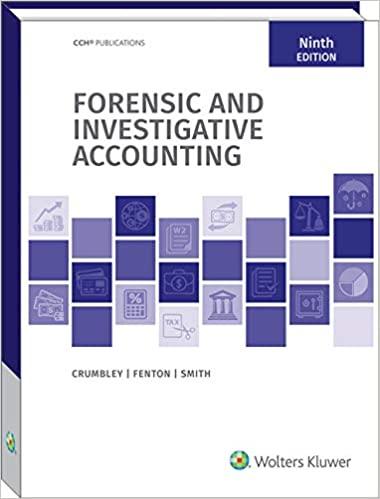Question
Financial statements for Zachary Company follow. ZACHARY COMPANY Balance Sheets As of December 31 Year 4 Year 3 Assets Current assets Cash $ 25,500 $
Financial statements for Zachary Company follow.
| ZACHARY COMPANY | |||||||
| Balance Sheets As of December 31 | |||||||
| Year 4 | Year 3 | ||||||
| Assets | |||||||
| Current assets | |||||||
| Cash | $ | 25,500 | $ | 21,500 | |||
| Marketable securities | 21,900 | 7,900 | |||||
| Accounts receivable (net) | 60,000 | 52,000 | |||||
| Inventories | 145,000 | 153,000 | |||||
| Prepaid items | 29,000 | 14,000 | |||||
| Total current assets | 281,400 | 248,400 | |||||
| Investments | 22,000 | 15,000 | |||||
| Plant (net) | 260,000 | 245,000 | |||||
| Land | 29,000 | 24,000 | |||||
| Total assets | $ | 592,400 | $ | 532,400 | |||
| Liabilities and Stockholders Equity | |||||||
| Liabilities | |||||||
| Current liabilities | |||||||
| Notes payable | $ | 39,200 | $ | 10,800 | |||
| Accounts payable | 73,800 | 60,000 | |||||
| Salaries payable | 22,000 | 16,000 | |||||
| Total current liabilities | 135,000 | 86,800 | |||||
| Noncurrent liabilities | |||||||
| Bonds payable | 110,000 | 110,000 | |||||
| Other | 25,000 | 20,000 | |||||
| Total noncurrent liabilities | 135,000 | 130,000 | |||||
| Total liabilities | 270,000 | 216,800 | |||||
| Stockholders equity | |||||||
| Preferred stock, (par value $10, 5% cumulative, non-participating; 9,000 shares authorized and issued) | 90,000 | 90,000 | |||||
| Common stock (no par; 50,000 shares authorized; 10,000 shares issued) | 90,000 | 90,000 | |||||
| Retained earnings | 142,400 | 135,600 | |||||
| Total stockholders equity | 322,400 | 315,600 | |||||
| Total liabilities and stockholders equity | $ | 592,400 | $ | 532,400 | |||
| ZACHARY COMPANY | |||||||
| Statements of Income and Retained Earnings For the Years Ended December 31 | |||||||
| Year 4 | Year 3 | ||||||
| Revenues | |||||||
| Sales (net) | $ | 420,000 | $ | 400,000 | |||
| Other revenues | 11,800 | 8,800 | |||||
| Total revenues | 431,800 | 408,800 | |||||
| Expenses | |||||||
| Cost of goods sold | 210,000 | 160,000 | |||||
| Selling, general, and administrative | 74,000 | 69,000 | |||||
| Interest expense | 13,700 | 12,900 | |||||
| Income tax expense | 118,000 | 117,000 | |||||
| Total expenses | 415,700 | 358,900 | |||||
| Net earnings (net income) | 16,100 | 49,900 | |||||
| Retained earnings, January 1 | 135,600 | 95,000 | |||||
| Less: Preferred stock dividends | 4,500 | 4,500 | |||||
| Common stock dividends | 4,800 | 4,800 | |||||
| Retained earnings, December 31 | $ | 142,400 | $ | 135,600 | |||
Required Calculate the following ratios for Year 4 and Year 3. a. Working capital. b. Current ratio. (Round your answers to 2 decimal places.) c. Quick ratio. (Round your answers to 2 decimal places.) d. Receivables turnover (beginning receivables at January 1, Year 3, were $53,000). (Round your answers to 2 decimal places.) e. Average days to collect accounts receivable. (Use 365 days in a year. Round your intermediate calculations to 2 decimal places and your final answers to the nearest whole number.) f. Inventory turnover (beginning inventory at January 1, Year 3, was $159,000). (Round your answers to 2 decimal places.) g. Number of days to sell inventory. (Use 365 days in a year. Round your intermediate calculations to 2 decimal places and your final answers to the nearest whole number.) h. Debt-to-assets ratio. (Round your answers to the nearest whole percent.) i. Debt-to-equity ratio. (Round your answers to 2 decimal places.) j. Number of times interest was earned. (Round your answers to 2 decimal places.) k. Plant assets to long-term debt. (Round your answers to 2 decimal places.) l. Net margin. (Round your answers to 2 decimal places.) m. Turnover of assets (average total assets in Year 3 is $532,400). (Round your answers to 2 decimal places.) n. Return on investment (average total assets in Year 3 is $532,400). (Round your answers to 2 decimal places.) o. Return on equity (average stockholders' equity in Year 3 is $135,600). (Round your answers to 2 decimal places.) p. Earnings per share (total shares outstanding is unchanged). (Round your answers to 2 decimal places.) q. Book value per share of common stock. (Round your answers to 2 decimal places.) r. Price-earnings ratio (market price per share: Year 3, $12.70; Year 4, $14.40). (Round your intermediate calculations and final answer to 2 decimal places.) s. Dividend yield on common stock. (Round your answers to 2 decimal places.)
Step by Step Solution
There are 3 Steps involved in it
Step: 1

Get Instant Access to Expert-Tailored Solutions
See step-by-step solutions with expert insights and AI powered tools for academic success
Step: 2

Step: 3

Ace Your Homework with AI
Get the answers you need in no time with our AI-driven, step-by-step assistance
Get Started


